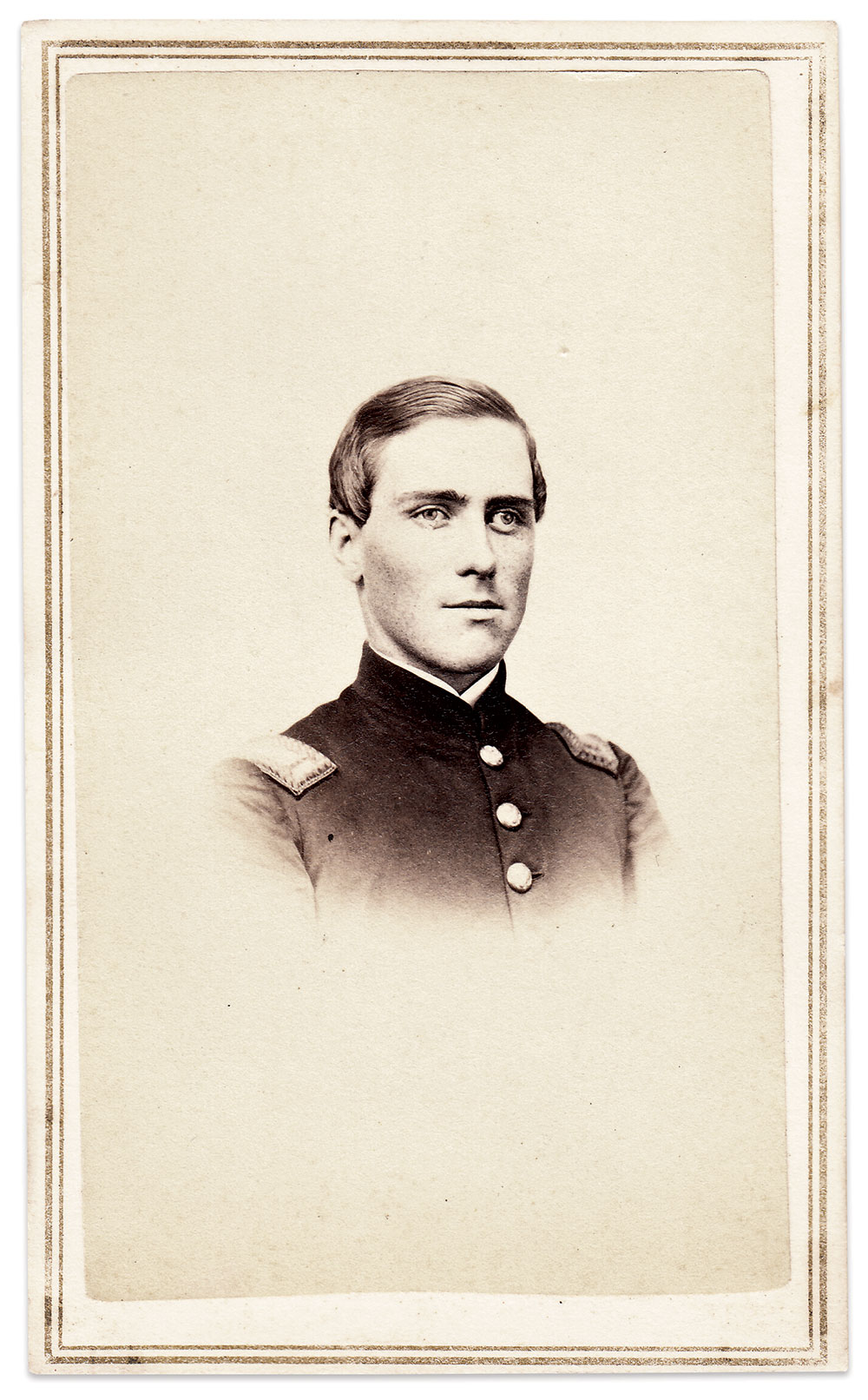By Scott Valentine

First Lt. and Acting Adjutant Orett Lyman Munger and his comrades in the 44th New York Infantry rushed to capture, along with the rest of 5th Corps, the strategic crossroads town of Spotsylvania, Va., on May 8, 1864. As they closed in on the target, two of the best veteran regiments in the Corps, the 44th and the 83rd Pennsylvania Infantry, received orders to attack what was believed to be only dismounted cavalry at Laurel Hill.
The two regiments advanced in a line of battle on either side of Brock Road. Despite withering musketry, the 83rd reached the Confederate position and thrust their bayonets through the brush atop the defensive earthworks. Meanwhile, a tangle of brush and logs arrested the momentum of the 44th about 30 yards in front of the Confederates. According to the regimental history, “The firing on both sides was brisk and at short range. The proximity of the enemy was such that Adjutant Munger used his revolver with telling effect.” Munger stood behind a tree, which, to his dismay, didn’t quite screen his entire body. Bullets ridded his hat and coat before a round grazed his leg. Munger shouted “Colonel, I guess I’m hit.” But he quickly discovered Col. Freeman Conner and the regiment were in full retreat—and the Confederates were behind him. Munger and three other officers, plus 36 enlisted men, were encircled and taken prisoner.
Munger described his capture in the regimental history. After firing the fifth shot from his pistol, something impelled him to turn around: “There stood two Confederate soldiers with muskets pointed at his head…Quick decision was imperative, and the first thought, which was to shoot one of the men in his way and disable the other by a blow with his sword, and then try to make his escape, gave way to conclusions more sane…To the demand, ‘Come in, you d—d Yank,’ the reply was made—‘I think I’m in.’”
His captors relieved Munger of his revolver and sword and hustled him inside the breastworks and on to the rear.
By the day’s end, the prisoner count swelled to approximately 350.
Munger and his comrades resigned themselves to a locomotive trip to prison camps. Suddenly, a shot rang out from their rear. One of the rebel guards then cried out, “The Yanks are coming.” The Confederate detail in charge of the prisoners ordered their captives to quick march. Munger recalled, “The clatter of hoofs was soon heard, and memory still pictures three horsemen, who, with speedier beasts, led the advance of the gallant Custer’s Brigade of Sheridan’s Cavalry, as it appeared in view. These three impetuous riders, almost lying on their horses’ necks, with carbines extended, crowded so closely to the now fleeing Confederate guard, that three of its number were brought down while the others escaped. On came the troopers, receiving as they passed the wild and vociferous welcome of 350 liberated men, whose voices, raised in loud cheers, proclaimed their joy and gratitude.” In the vanguard of the main force of the troopers was Brig. Gen. George Armstrong Custer himself.
The clatter of hoofs was soon heard, and memory still pictures three horsemen, who, with speedier beasts, led the advance of the gallant Custer’s Brigade of Sheridan’s Cavalry.
Munger and the others captured at Laurel Hill rejoined their regiments on May 26.
On June 3 at Cold Harbor, a ball from an exploding canister shot slightly wounded Munger. He and the 44th fought at Petersburg and at the Weldon Railroad in August and at Poplar Spring Church in September, before the regiment’s enlistment ended.
After the war, Munger married are started a family that grew to include three sons and three daughters. In 1881, he moved his family to Chicago to join his brother as a partner in the laundry business. Munger lived until 1925, dying at age 82.
Scott Valentine is a MI Contributing Editor.
SPREAD THE WORD: We encourage you to share this story on social media and elsewhere to educate and raise awareness. If you wish to use any image on this page for another purpose, please request permission.
LEARN MORE about Military Images, America’s only magazine dedicated to showcasing, interpreting and preserving Civil War portrait photography.
VISIT OUR STORE to subscribe, renew a subscription, and more.

